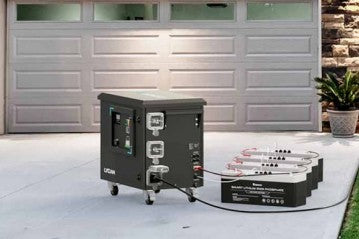
In recent years, solar energy has emerged as a sustainable and cost-effective solution for homeowners and businesses alike. As more people turn to solar power, the importance of reliable energy storage becomes evident. Solar battery banks provide the means to store excess energy generated by solar panels, ensuring a consistent and uninterrupted power supply. In this guide, we will explore the pros and cons of solar battery storage, discuss the costs involved, and provide a step-by-step approach to building your own battery bank for solar.
1. Pros and Cons of Solar Battery Storage
Solar battery storage offers numerous benefits, including:
- Energy Independence: Solar batteries allow you to store excess energy for use during cloudy days, at night, or during power outages.
- Lower Energy Costs: By using stored energy during peak-demand periods or when electricity rates are higher, you can reduce your reliance on the grid and save on energy bills.
- Environmental Sustainability: Solar battery banks help maximize the utilization of clean, renewable energy, reducing dependence on fossil fuels.
- Grid Support: In some cases, solar battery systems can be configured to provide backup power to the grid, enhancing overall grid stability.
However, it's important to consider the drawbacks as well:
- Initial Investment: Building a solar battery bank involves upfront costs for batteries, inverters, and installation.
- Limited Energy Storage: The capacity of solar battery banks may be limited, necessitating careful planning to meet your energy requirements.
- Battery Lifespan: Batteries have a finite lifespan and may require replacement after a certain number of cycles.
- Maintenance: Regular maintenance and monitoring are necessary to ensure optimal performance and longevity of the battery bank.
2. Solar Battery Bank Cost
The cost of a solar battery bank depends on several factors, including the capacity and type of batteries chosen, the size of the system, and installation expenses. Additionally, prices can vary based on the region and specific brand or model selected. While it is challenging to provide an exact cost estimate, a rough estimate for a typical residential solar battery bank is between $5,000 and $15,000. It's essential to consider the long-term benefits and potential savings when evaluating the investment.
3. How to Build a Battery Bank for Solar? Step-by-Step Guide
Building a battery bank for solar involves several key steps. Here is a step-by-step guide to help you through the process:
Step 1: Determine Your Energy Needs
Assess your energy consumption patterns to determine the capacity of the battery bank required. Consider factors like average daily energy usage, peak demands, and any backup power requirements.
Step 2: Select the Right Batteries
Choose the type of batteries that align with your energy needs, budget, and maintenance preferences. Common options include lead-acid, lithium-ion, and saltwater batteries. Each type has its advantages and disadvantages, so research thoroughly before making a decision.
Step 3: Calculate Battery Bank Capacity
To determine the capacity of your battery bank, consider the desired backup duration, battery voltage, and the usable capacity of the chosen batteries. Ensure the battery bank capacity is sufficient to meet your energy requirements during periods of low solar generation.
Step 4: Choose the Inverter System
Select an appropriate inverter system that converts the direct current (DC) stored in the battery bank into alternating current (AC) for use in your home or business. Consider factors like efficiency, power output, and compatibility with your battery bank and solar panels.
Step 5: Plan the Battery Bank Configuration
Design the physical layout of your battery bank, considering factors like available space, ventilation, and access for maintenance. Ensure the batteries are interconnected correctly and that safety measures are implemented, including appropriate fuses and disconnect switches.
Step 6: Install and Connect the System
Engage the services of a qualified solar installer to ensure proper installation of the battery bank and inverter system. Follow all safety guidelines and local electrical codes during installation. Connect the solar panels, inverter, and battery bank, ensuring all connections are secure.
Step 7: Monitor and Maintain the System
Regularly monitor the performance of your solar battery bank system to ensure optimal operation. Follow manufacturer guidelines for maintenance, including cleaning, inspection, and periodic battery capacity testing. Be aware of any warranty requirements and keep records of maintenance activities.
Conclusion
Building a battery bank for solar power can provide you with energy independence, cost savings, and contribute to a greener future. By understanding the pros and cons, estimating costs, and following a step-by-step guide, you can create a reliable and efficient solar battery bank tailored to your energy needs. Embrace the power of solar energy and take control of your energy future with a well-designed and properly installed battery bank.
If you are looking for the best battery banks, look no further than ECGSOLAX. We have the best solar battery to suit any budget, place, or purpose.

0 Kommentare